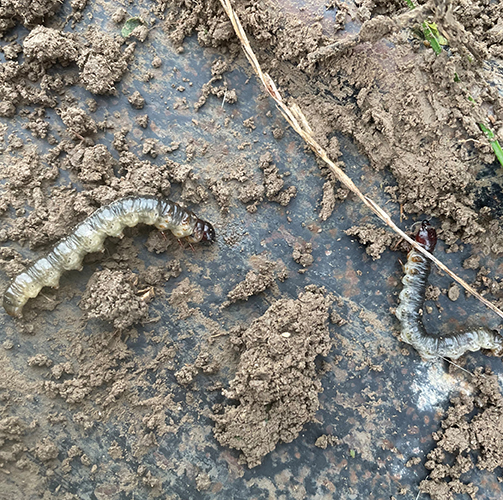

Digging in for Moth Management
Moth caterpillars can hurt your pasture production. Farmlands Agronomist Michael Magennity has some tips for tackling these pesky eaters.
Porina Moth is an insect that is widespread throughout New Zealand and its caterpillars attack pasture species including ryegrass and white clover. Flights of Porina Moth occur from October through to late January laying their eggs (up to 3,000 per moth!) across pasture, which will then hatch over the following weeks. Although these moths do not feed, their caterpillars can reduce pasture production dramatically. These caterpillars feed on the leaf of the plant, unlike Grass Grub larvae which feed on the roots of the plant.
An indicator for flights of Porina is when you notice an influx of moths when leaving outdoor lights on at this time of year or banging into your windows at night. Up to six weeks post-flight is a great time to dig into your pastures to identify if caterpillars are causing an issue on pasture production. At this time, caterpillars can range from 4-30mm in length and are identified by their grey/yellowish body and brown heads. As these caterpillars live underground and come up to feed in the evening, digging down to 30cm depth is required to assess caterpillar populations. Caterpillar populations of 2 per spade square in March can reduce production by 1,500kg DM/ha, and at this time of year when feed is in high demand, this can have devastating effects if not monitored and controlled.
To reduce the risk of Porina pressure in your pastures, keeping your pasture covers relatively low in late spring can reduce the survival of the eggs laid into pasture by the moth. Silage, hay and poorly managed paddocks are typically the worst for Porina damage. If a presence of Porina is detected, applying an Insect Growth Regulator insecticide to these paddocks has a great impact on reducing the numbers and is relatively cost-effective. This is best applied in late January-March and best applied to short pasture. AR37 endophyte also has claim to aid in the control of Porina protection, but these pastures will still need to be monitored if pressure becomes too high.
Grass Grub impact can be monitored at the same time but note that AR37 has no control on Grass Grab larvae. Insecticide treatments will differ as well, because of where they feed on the plant. Grass Grub and Porina can often be confused, but both can have just as much impact on pasture production as each other. Grass Grub tend to live very shallow in the soil over these months and tend to go deeper in the cooler months. Because Grass Grub never leaves the soil to feed, insecticide treatments can have varied effects with chemicals needing to be washed into the soil to where the larvae are actively feeding and an organophosphate to be used. Some organic bacterial treatment methods are available for Grass Grub control that introduce a bacteria that carries a disease specific to the Grass Grub larvae that reduces the population naturally.

